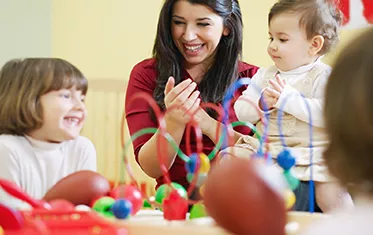Starting Strong with Your New Dog: Essential Tips for First-Time Owners
Welcoming a dog into your life is an experience filled with excitement, laughter, a few muddy paw prints, and plenty of tail wags. But dog ownership is much more than just cuddles on the couch and afternoon walks. It comes with real responsibilities—from choosing the right breed to understanding your dog’s health and nutrition.
Choosing the Right Breed for Your Home and Lifestyle
Before falling for those puppy-dog eyes, consider what type of dog will fit best with your lifestyle and living space. Not all breeds have the same needs or energy levels, and making the right match sets both you and your pet up for success.
Factors to Weigh Before Deciding
- Activity Level
Some breeds, like Border Collies or Siberian Huskies, need tons of exercise and mental stimulation. Others, like Bulldogs or Shih Tzus, are content with lounging at home and short daily walks.
- Space to Roam
If you live in an apartment, opt for smaller, quieter breeds or those known for adapting well to compact spaces. Larger, more active breeds may be better suited for homes with yards or nearby parks.
- Time Commitment
Certain breeds require intensive grooming or regular training. Assess how much time you can realistically dedicate each day to your dog’s care and enrichment.
- Family and Lifestyle
Think about allergies, small children, or other pets in the house. Some dogs are kid-friendly and social, while others may be more reserved or need space.
Take your time to research. Many rescue organizations and reputable breeders will happily help you assess the best type of dog for your environment and daily routine.
Preparing Your Home for a New Dog
Once you know which type of dog you’re bringing home, it’s time to get your space ready. Dogs are naturally curious and will explore every nook, so making your home both safe and welcoming is crucial.
Steps to Dog-Proof Your Space
- Remove small objects and anything toxic (such as cleaning supplies or certain houseplants) that a dog might chew or ingest.
- Secure cords and cables to avoid chewing hazards.
- Set up designated zones for eating, sleeping, and playing. A comfy bed in a quiet spot helps your dog feel secure from the first night.
- Install gates if there are rooms or staircases off-limits to your new pet.
Preparation now saves stress later—for both you and your dog.
Essential Supplies for Every New Dog Owner
A little shopping goes a long way in easing your dog’s transition and setting you both up for success. Here’s what you’ll need on day one:
- Collar and leash suited to your dog’s size and breed
- ID tags with your contact information
- Comfortable, washable bed
- Bowls for food and water
- Dog food (ask what your new dog has been eating to avoid stomach upsets at first)
- Chew-proof toys and interactive puzzle toys
- Brush and grooming supplies for your dog’s coat type
- Crate for house training (especially helpful for puppies)
- Enzyme-based cleaner for any accidents during the early days
Shopping for your dog can be half the fun! Picks that suit their size, age, and breed help everyone settle in faster.
Basic Training: Establishing Good Habits Early On
Every dog deserves the guidance to become a well-mannered companion. Start teaching basic commands and house rules as soon as your dog arrives home.
- Set boundaries: Decide which furniture, rooms, or behaviors are off-limits, and stick to them.
- Teach simple commands: “Sit,” “Stay,” and “Come” are good places to start. Use short, positive training sessions with treats and plenty of praise.
- Crate train if possible: This helps with housebreaking and gives your pup a safe spot to relax.
Consider professional dog training, like that in Loxahatchee, if you hit a wall or want to build a strong foundation.
Socialization: Exposing Your Dog to the Big Wide World
A well-socialized dog is confident and adaptable, making outings and new situations far less stressful for both of you.
How to Help Your Dog Socialize
- Go for short walks in quiet places at first. Gradually introduce busier environments.
- Meet new people and pets in a controlled, positive setting.
- Take car rides or visit different neighborhoods.
- Reward calm behavior with treats and praise, reinforcing positive associations.
Puppy classes and group walks are great ways to encourage gentle, safe socialization.
Health and Nutrition: Understanding the Basics
Your dog’s short- and long-term well-being depends on a foundation of good health and proper nutrition.
Key Health Steps for New Dog Owners
- Find a trusted veterinarian and schedule an initial health check-up right away.
- Keep up with vaccinations and recommended booster shots.
- Start on parasite prevention for fleas, ticks, and heartworms as guided by your vet.
- Feed high-quality dog food appropriate for your dog’s size, age, and breed.
- Avoid feeding table scraps or foods that are toxic to dogs, such as chocolate, onions, and grapes.
Ask your vet for nutrition and feeding advice, and keep an eye out for changes in behavior or appetite, which could signal health issues.
Common Behavioral Issues: Addressing Challenges Head On
Even the cutest dog will test the rules from time to time. Many new owners face challenges such as chewing, barking, whining, and even house soiling.
- Be patient. Dogs don’t understand what’s “wrong”—they’re learning your expectations.
- Redirect unwanted behaviors. Offer toys instead of shoes for chewing or praise for quiet behavior instead of barking.
- Stick to routines. Dogs thrive on structure; regular feeding and exercise times can prevent most issues.
- Stay calm and avoid punishment. Instead, focus on reward-based training.
If a specific issue keeps coming back, don’t be afraid to ask other dog owners or trainers for advice. Support and information are always available.
Building a Bond: Creating a Lifelong Connection
The strongest relationships grow out of trust, play, and positive daily interactions.
- Spend quality time together playing games, walking, or simply relaxing.
- Use gentle touch and praise to reinforce your bond.
- Learn your dog’s preferences and body language to understand what they enjoy.
- Stay involved in training and provide ongoing learning and play opportunities.
Dogs are incredibly intuitive; the love and effort you put in will always come back tenfold.
Conclusion
Starting strong as a new dog owner isn’t about being perfect. It’s about making mindful choices, staying patient during setbacks, and showering your companion with kindness and attention. Every dog is unique, and every day brings new opportunities to strengthen your bond. With a little guidance, the right resources, and lots of affection, you’ll help your new friend live their happiest, healthiest life.
also read: The Hidden Advantage of Hiring a Buyer’s Agent in the Lower North Shore







